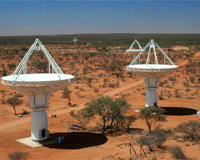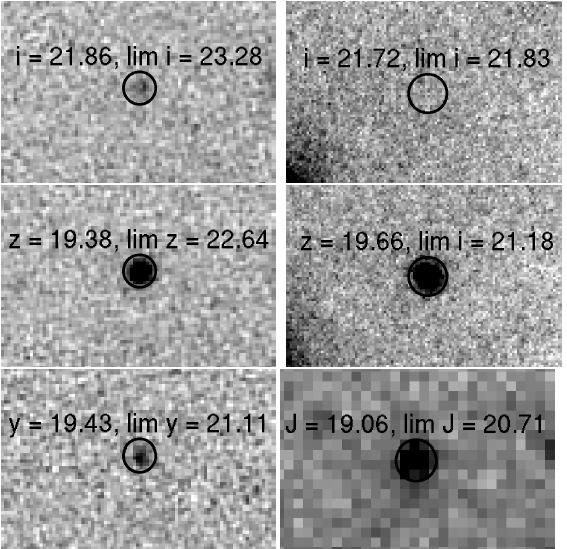Title: Detection of Galactic and Extragalactic Millimeter-wavelength Transient Sources with SPT-3G
Authors: S. Guns, A. Foster, C. Daley, A. Rahlin, N. Whitehorn, P. A. R. Ade, Z. Ahmed, E. Anderes, A. J. Anderson, M. Archipley, J. S. Avva, K. Aylor, L. Balkenhol, P. S. Barry, R. Basu Thakur, K. Benabed, A. N. Bender, B. A. Benson, F. Bianchini, L. E. Bleem, F. R. Bouchet, L. Bryant, K. Byrum, J. E. Carlstrom, F. W. Carter, T. W. Cecil, C. L. Chang, P. Chaubal, G. Chen, H.-M. Cho, T.-L. Chou, J.-F. Cliche, T. M. Crawford, A. Cukierman, T. de Haan, E. V. Denison, K. Dibert, J. Ding, M. A. Dobbs, D. Dutcher, W. Everett, C. Feng, K. R. Ferguson, J. Fu, S. Galli, A. E. Gambrel, R. W. Gardner, N. Goeckner-Wald, R. Gualtieri, N. Gupta, R. Guyser, N. W. Halverson, A. H. Harke-Hosemann, N. L. Harrington, J. W. Henning, G. C. Hilton, E. Hivon, G. P. Holder, W. L. Holzapfel, J. C. Hood, D. Howe, N. Huang, K. D. Irwin, O. B. Jeong, M. Jonas, A. Jones, T. S. Khaire, L. Knox, A. M. Kofman, M. Korman, D. L. Kubik, S. Kuhlmann, C.-L. Kuo, A. T. Lee, E. M. Leitch, A. E. Lowitz, C. Lu, D. P. Marrone, S. S. Meyer, D. Michalik, M. Millea, J. Montgomery, A. Nadolski, T. Natoli, H. Nguyen, G. I. Noble, V. Novosad, Y. Omori, S. Padin, Z. Pan, P. Paschos, J. Pearson, K. A. Phadke, C. M. Posada, K. Prabhu, W. Quan, C. L. Reichardt, D. Riebel, B. Riedel, M. Rouble , J. E. Ruhl, J. T. Sayre, E. Schiappucci, E. Shirokoff, G. Smecher, J. A. Sobrin, A. A. Stark, J. Stephen, K. T. Story, A. Suzuki, K. L. Thompson, B. Thorne, C. Tucker, C. Umilta, L. R. Vale, J. D. Vieira, G. Wang, W. L. K. Wu, V. Yefremenko, K. W. Yoon, M. R. Young, L. Zhang (SPT-3G collaboration)
First Author’s Institution: Department of Physics, University of California, Berkeley, CA 94720, USA
Status: Published in The Astrophysical Journal, August 2021, open access
Cosmology at the South Pole
Ever wondered what science gets done at the South Pole? It turns out that many astrophysics and cosmology experiments end up there! The cosmic microwave background (CMB) is the most constant, unchanging-in-time source we can observe, and the South Pole is an excellent location for observing the same spot in the sky since it is continuously nighttime for half the year due to the Earth’s tilted rotation axis relative to the Sun. Check out Kirit Karkare’s series of Bites on visiting the South Pole! Many CMB experiments like BICEP/Keck continuously monitor the same patch of 1500 deg2 sky with low galactic dust foregrounds to achieve extremely high sensitivity. Another experiment is SPT-3G, a camera installed on the South Pole Telescope (right next door to BICEP/Keck at the Amundsen-Scott South Pole Station!) that measures the CMB’s polarization to constrain cosmological parameters like the Hubble constant and extensions to the standard model of cosmology (ΛCDM) like inflation.
Something is in the way…
SPT-3G operates at three bands centered at 95, 150, and 220 GHz (the CMB peaks ~160GHz because it is a black body at T=2.7 K), often called the millimeter/sub-millimeter (mm) bands for their corresponding wavelengths. But what happens if something explodes in the foreground between us and the CMB? A little dot might appear in our CMB images that wasn’t there before.
At these frequencies, most observations of transients are follow-ups on sources discovered in other bands, such as the optical or X-ray. This selection effect presents a problem in understanding the mm transient population since existing studies are biased toward sources that emit light at other wavelengths during their lifetime. For example, we would miss the millimeter emission from sources that first emit in the mm and then in some different waveband later. An untargeted, continuous monitoring campaign of the mm sky is necessary to de-bias our population of mm transients. This strategy is precisely what CMB experiments like SPT-3G are doing, making them an excellent choice for searching for and studying these events. In this paper, the authors report 15 transient point sources during the 2020 Australian winter observing season previously undetected by SPT.
Finding transients
Since it is hard to predict where, when, or how long a transient event will be observable, it is essential to check for them on various timescales across the entire image. To do this, they compare a reference image from a year of data to images they make from days to weeks or observations. SPT-3G scans across the whole BICEP/Keck patch roughly every twelve hours, so they made a map after every sub-observation. To avoid static point sources and known variable sources like active galactic nuclei (AGN), they subtract a year-long average map and place a mask over all point sources that exceed five milliJansky (mJy) from their 2019 maps. This cutoff is low enough that any observed variability for sources that dim is more likely due to the uncertainty in the measurement. A source extraction algorithm is then run on the resulting masked difference maps, and light curves are automatically generated for the previous 14 days for visual inspection.
Stellar flares
The resulting search found thirteen short events coinciding in position with eight nearby (<200 parsecs) known variable stars of various kinds, including M dwarfs, RS CVn systems, and BY Dra variables. The events had rise and fall times shorter than hours and, in one case, even exceeded 2 Jansky for a 3-minute period, which is highly unusual to see from stars. When considering the observing cadence and sky area, the authors predicted a rate of 1000 flares of similar brightness over the entire sky per year.
Extragalactic sources
Two of the 15 detected events were not associated with nearby stars and were much dimmer and longer. The sources persisted for 2–3 weeks and peaked between 15–40 mJy. Neither coincided with any previously cataloged radio sources, and overlapping ASKAP observations at 887MHz did not detect any source to a depth of 0.2 mJy. This non-detection means the spectrum’s spectral index (slope) must be positive with frequency, which can help us determine the physical mechanism responsible for the emission.
The authors suggest these sources may be AGN since they tend to flare on these timescales. Still, the luminosity enhancements relative to previous non-detections are much more significant than other known mm-flaring AGN. Given the known distances for the associated galaxies, the computed luminosities are consistent with tidal disruption events (TDEs) or fast blue optical transients (FBOTs) like AT2018cow (“The Cow”), or maybe even AT2023fhn (“The Finch”), known for its large offset from its host galaxy. However, no triggers or alerts occurred at these locations at other wavelengths that would allow us to confirm this hypothesis. Additionally, the sources were not strong enough to extract reliable linear polarization measurements, which would have informed how or if magnetic fields were responsible for the emission.
Alerts
To facilitate the classification of transients observed by SPT-3G, the authors are now publishing online alerts with less than a 24-hour delay from the events to allow for multi-wavelength follow-up. See an example from earlier this year on the Astronomer’s Telegram here! By observing these sources across the wavelengths, we can begin to characterize their properties and uncover their origins. Detection and classification of mm-discovered transients are essential in understanding the mm-variable sky and the underlying transient emission mechanisms. Surveys like SPT-3G will enable the discovery of new populations of mm variable sources and complete studies of known stars and extragalactic sources.
Astrobite edited by Bill Smith & Aldo Panfichi
Featured image credit: University of Toronto, Dunlap Institute for Astronomy & Astrophysics; Prof. Keith Vanderlinde; U.S. National Science Foundation




